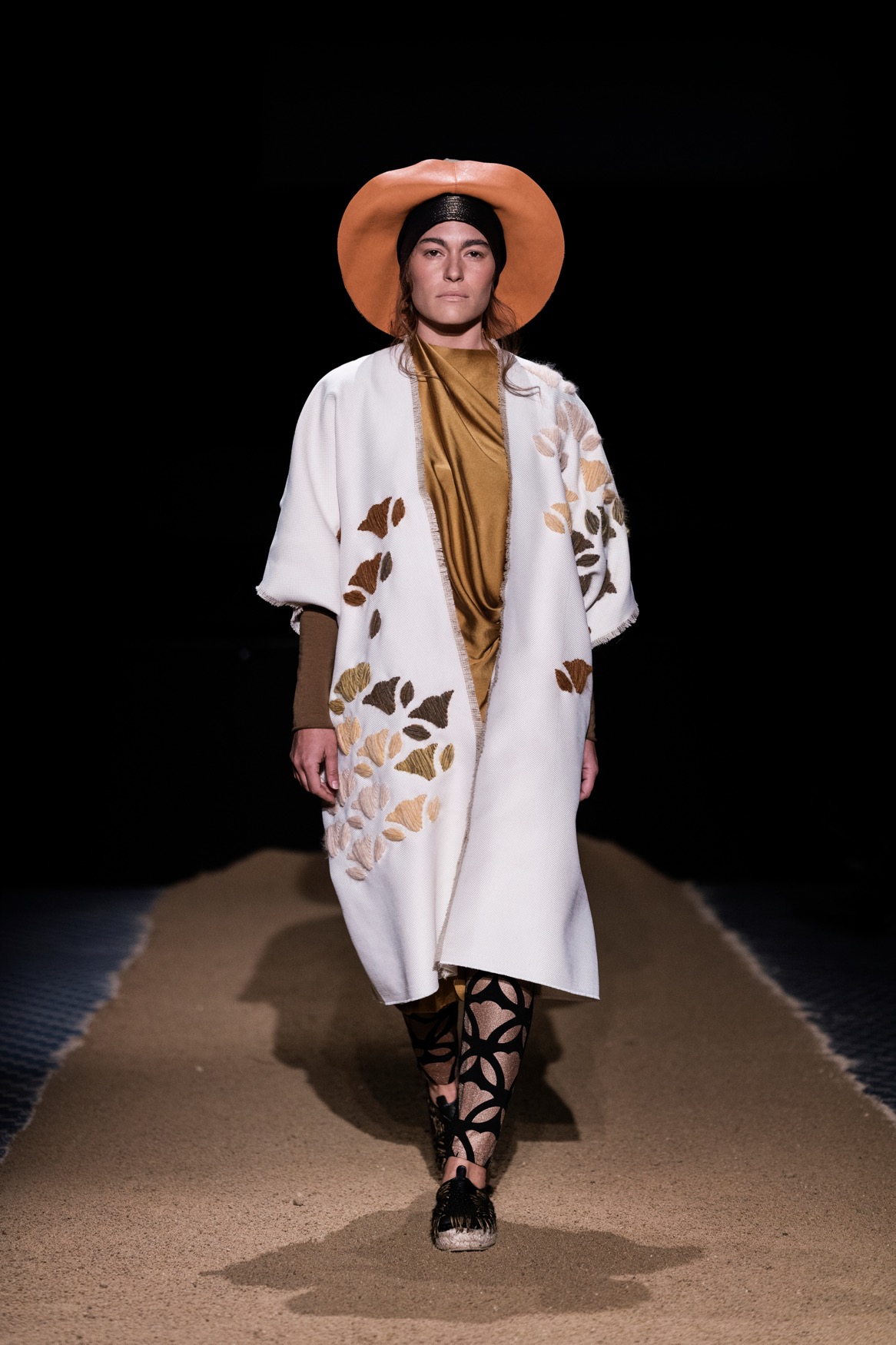- No products
Shipping To be determined
Total 0,00 €
YOU HAVE ADDED TO SHOPPING CART
This collection is a reflection and denunciation of the human footprint in our ecosystem. An ecosystem sick of overproduction and ruthless exploitation of natural and human resources, in which the fashion industry has a significant responsibility. The starting point is one of the most dramatic man-made ecological disasters: the disappearance of the Aral Sea.
In 1960, the Aral Sea was the fourth largest lake in the world, but USSR irrigation projects to divert its water to the arid plains of Kazakhstan, Uzbekistan and Turkmenistan for extensive cotton fields turned a prosperous lake into a desert of salt and toxic substances. The sea’s surface area has shrunk by more than 80% and left behind a cemetery of rusty vessels in salinized sand and serious health consequences for the region's population.
The toxic desert sea bed that has turned into the Aral Sea and the oxidation of abandoned boats are the source of inspiration for this collection.

The fusion of iron with the desert sand is worked combining very different textures that are merged using artisanal techniques.
Patterning is based on geometric pieces that are subtly rounded and that become oversize, comfortable, and thus garments suitable to work. The combination of materials in one piece symbolizes the fusion and the symbiosis between elements.
The conversation between materials and the experimentation with textures is one of the core ideas of the collection, which together with noble materials create landscapes and merge concepts. The technique of basketry, macrame, knitwear and embroidery are broadly used. The spinning, the ribbons and cords have an important role in the use of these techniques.
The printings are based on drawings from Central Asia and they are created from a zoom of an iconographic elements. They are copper-colored printed using the silkscreen technique.
Natural fabrics such as cotton, silk, mohair, cashmere and wool prevail. The choice of noble fabrics has been a decision made with great care and environmental awareness.
The colors stir us to the Aral Desert, orangey tones of camel, brown and copper predominate.